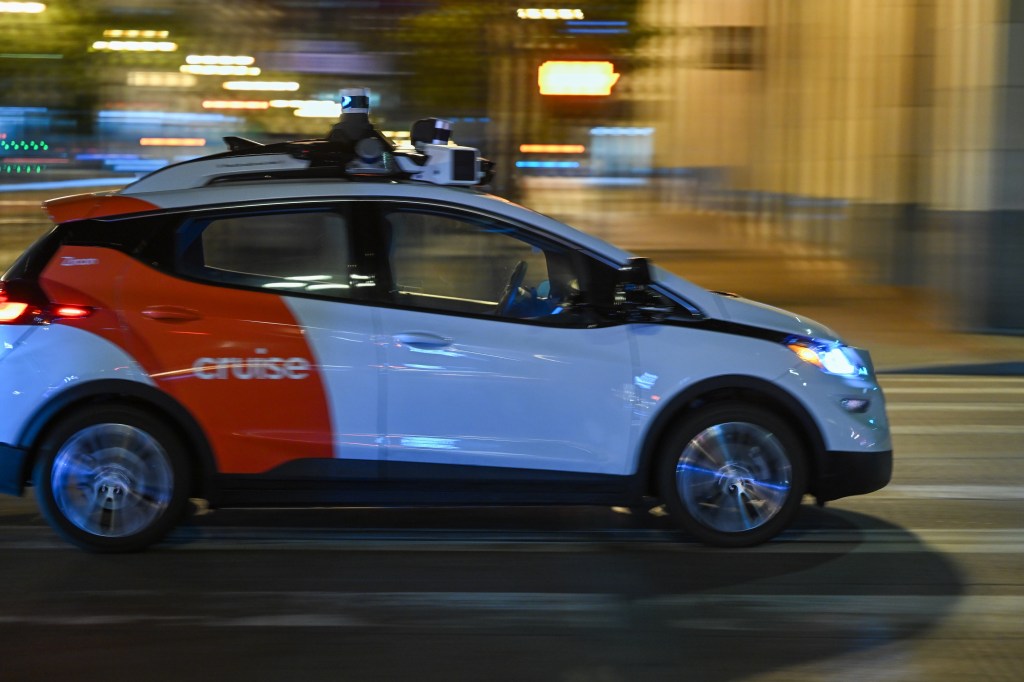A senior Cruise executive didn’t mention that one of his company’s self-driving cars dragged a pedestrian 20 feet in a summary sent to the director of the California Department of Motor Vehicles the morning after the October 2 incident, an email obtained by Motherboard shows.
This provides concrete evidence that Cruise initially misled the state regulator about what actually happened during the crash. The California DMV said in its October 24 decision to revoke the self-driving car company’s license to operate that Cruise omitted footage of the pedestrian being dragged by the car, which had come to a stop after the person was thrown into its path by a separate collision, in a meeting on October 3. Cruise flatly denied this allegation.
Videos by VICE
The email, which Motherboard obtained through a public records request, was sent by David Estrada, the senior vice president for legal affairs at Cruise according to his LinkedIn profile. It was sent to Steve Gordon, the director of the CA DMV (no relation to this reporter) in advance of an 11 a.m. meeting on October 3, the day after the crash.
“I know you are generally aware of the incident last night, which we will review in detail with you and your team per our standard operating procedure,’ Estrada wrote. “A summary is as follows. At approximately 9:30 pm Oct 2 at 5th and Market in San Francisco, a human-driven, non-Cruise vehicle hit a pedestrian at significant speed near the middle lane of two-way traffic and left the scene. At the time of the incident, a Cruise AV was simultaneously traveling in an adjacent lane close. The pedestrian rolled off of the still-traveling perpetrating vehicle and landed in the lane directly in front of the moving Cruise vehicle, which hard-braked but was unable to stop before making impact with the pedestrian. The pedestrian has been transported to the hospital with injuries. The Cruise AV captured the incident on video and we are actively working with police to help identify the responsible driver. There were no passengers in the Cruise vehicle at the time. We can discuss further today, and will do a full review with you and the assembled team.”
This narrative omits a key detail: After the Cruise vehicle hard-braked, it then executed a “pullover maneuver” while the pedestrian was underneath the car, dragging the person some 20 feet before coming to another full stop, according to the DMV’s narrative of events based on the full video of the incident as captured by Cruise vehicles. Cruise’s summary of the incident only vaguely refers to the vehicle “making impact” with the pedestrian.
The DMV contended in its notice of suspension that it was not shown the full video, including the dragging, during the October 3 meeting. On October 24, the day its license was suspended, a Cruise spokesperson Hannah Lindow told Motherboard, “I can confirm that Cruise showed the full video to the DMV on October 3rd, and played it multiple times.” However, he initial summary by Estrada omits the dragging and supports the DMV’s contention that Cruise initially withheld a full accounting of events.
In the aftermath of the license suspension, Cruise halted all driverless vehicle operations across the country, both with and without safety drivers, hired a law firm to investigate the incident, and issued a “voluntary recall to address circumstances in which the Cruise Collision Detection Subsystem may cause the Cruise AV to attempt to pull over out of traffic instead of remaining stationary when a pullover is not the desired post-collision response.”
In a statement to Motherboard, a cruise spokesperson did not directly address the Estrada email but referred Motherboard to the company’s blog post from November 8 announcing the legal review by an outside law firm, pause of operations, and software update.
“We recently announced a pause of all our driverless operations while we take time to examine our processes, systems, and tools and improve how we operate. During this time we plan to seek input from our government and agency partners and other key stakeholders to understand how we can be better partners,” the Cruise spokesperson said. “This outside review will help us learn from this incident, strengthen our protocols, and improve our response to these types of incidents in the future.”
Update: This article was updated with a statement from Cruise.




